
1825 (MDCCCXXV) was a common year starting on Saturday of the Gregorian calendar and a common year starting on Thursday of the Julian calendar, the 1825th year of the Common Era (CE) and Anno Domini (AD) designations, the 825th year of the 2nd millennium, the 25th year of the 19th century, and the 6th year of the 1820s decade. As of the start of 1825, the Gregorian calendar was 12 days ahead of the Julian calendar, which remained in localized use until 1923.

Big stick ideology, big stick diplomacy, or big stick policy refers to President Theodore Roosevelt's foreign policy, "speak softly and carry a big stick; you will go far". Roosevelt described his style of foreign policy as "the exercise of intelligent forethought and of decisive action sufficiently far in advance of any likely crisis". As practiced by Roosevelt, big stick diplomacy had five components. First, it was essential to possess serious military capability that would force the adversary to pay close attention. At the time that meant a world-class navy; Roosevelt never had a large army at his disposal. The other qualities were to act justly toward other nations, never to bluff, to strike only when prepared to strike hard, and to be willing to allow the adversary to save face in defeat.

Henry Cabot Lodge was an American Republican politician, historian, and statesman from Massachusetts. He served in the United States Senate from 1893 to 1924 and is best known for his positions on foreign policy. His successful crusade against Woodrow Wilson's Treaty of Versailles ensured that the United States never joined the League of Nations and his reservations against that treaty influenced the structure of the modern United Nations.

The Strategic Arms Limitation Talks (SALT) were two rounds of bilateral conferences and corresponding international treaties involving the United States and the Soviet Union. The Cold War superpowers dealt with arms control in two rounds of talks and agreements: SALT I and SALT II.

The Treaty of Peace between the United States of America and the Kingdom of Spain, commonly known as the Treaty of Paris of 1898, was a treaty signed by Spain and the United States on December 10, 1898, that ended the Spanish–American War. Under it, Spain relinquished all claim of sovereignty over and title to territories described there as the island of Porto Rico and other islands now under Spanish sovereignty in the West Indies, and the island of Guam in the Marianas or Ladrones, the archipelago known as the Philippine Islands, and comprehending the islands lying within the following line:, and the Philippines to the United States. The cession of the Philippines involved a compensation of $20 million from the United States to Spain.

On March 2, 1901, the Platt Amendment was passed as part of the 1901 Army Appropriations Bill. It stipulated seven conditions for the withdrawal of United States troops remaining in Cuba at the end of the Spanish–American War, and an eighth condition that Cuba signs a treaty accepting these seven conditions. It defined the terms of Cuban–U.S. relations essentially to be an unequal one of U.S. dominance over Cuba.

Isla de la Juventud is the second-largest Cuban island and the seventh-largest island in the West Indies. The island was called the Isle of Pines until 1978. It has an area 2,200 km2 (850 sq mi) and is 50 km (31 mi) south of the island of Cuba, across the Gulf of Batabanó. The island lies almost directly south of Havana and Pinar del Río and is a Special Municipality, not part of any province and is therefore administered directly by the central government of Cuba. The island has only one municipality, also named Isla de la Juventud.
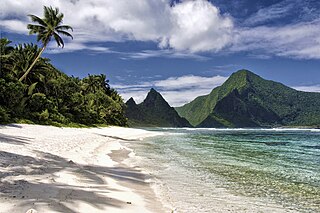
In the law of the United States, an insular area is a U.S.-associated jurisdiction that is not part of the 50 states or the District of Columbia. This includes fourteen U.S. territories administered under U.S. sovereignty, as well as three sovereign states each with a Compact of Free Association with the United States. The term also may be used to refer to the previous status of the Philippine Islands and the Trust Territory of the Pacific Islands when it existed.

Territories of the United States are sub-national administrative divisions overseen by the Federal government of the United States. The various American territories differ from the U.S. states and tribal reservations as they are not sovereign entities. In contrast, each state has a sovereignty separate from that of the federal government and each federally recognized Native American tribe possesses limited tribal sovereignty as a "dependent sovereign nation". Territories are classified by incorporation and whether they have an "organized" government through an organic act passed by the Congress. American territories are under American sovereignty and, consequently, may be treated as part of the United States proper in some ways and not others. Unincorporated territories in particular are not considered to be integral parts of the United States, and the Constitution of the United States applies only partially in those territories.
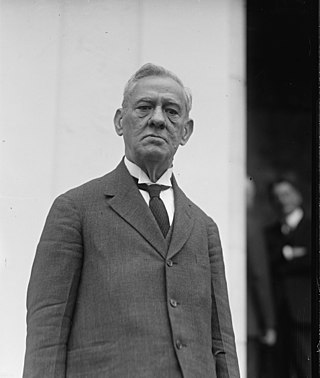
Alfredo de Zayas y Alfonso, usually known as Alfredo de Zayas under Spanish naming customs and also known as Alfredo Zayas, was a Cuban lawyer, poet and political figure. He served as prosecutor, judge, mayor of Havana, secretary of the Constitutional Convention, Senator in 1905, president of the Senate in 1906, Vice President of Cuba from 1909 to 1913 and President of Cuba from May 20, 1921, to May 20, 1925.
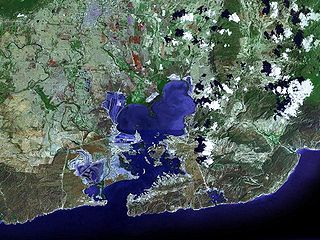
Guantánamo Bay is a bay in Guantánamo Province at the southeastern end of Cuba. It is the largest harbor on the south side of the island and it is surrounded by steep hills which create an enclave that is cut off from its immediate hinterland.

Benjamin Franklin Tilley was a career officer in the United States Navy who served from the end of the American Civil War through the Spanish–American War. He is best remembered as the first acting governor of American Samoa as well as the territory's first naval governor.

The 1903 Cuban–American Treaty of Relations was a treaty between the Republic of Cuba and the United States signed on May 22, 1903. The treaty contemplated leases of Guantánamo Bay; one such lease had been executed earlier in the year in February 1903, and a second lease was executed later in the year in July 1903.
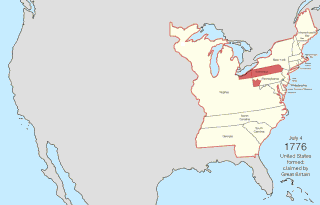
The United States of America was created on July 4, 1776, with the U.S. Declaration of Independence of thirteen British colonies in North America. In the Lee Resolution two days prior, the colonies resolved that they were free and independent states. The union was formalized in the Articles of Confederation, which came into force on March 1, 1781, after being ratified by all 13 states. Their independence was recognized by Great Britain in the Treaty of Paris of 1783, which concluded the American Revolutionary War. This effectively doubled the size of the colonies, now able to stretch west past the Proclamation Line to the Mississippi River. This land was organized into territories and then states, though there remained some conflict with the sea-to-sea grants claimed by some of the original colonies. In time, these grants were ceded to the federal government.

Gonzalo de Quesada was a key architect of Cuba's Independence Movement with José Martí during the late 19th century. He received the National Order of the Legion of Honour of France.
The Cuban–American Treaty of Relations took effect on June 9, 1934. It abrogated the Treaty of Relations of 1903.
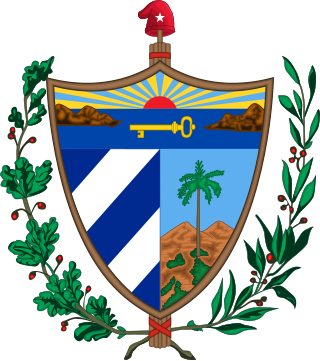
The 1901 Constitution of Cuba took effect in Cuba on 20 May 1902, and governments operated under it until it was replaced by the 1940 Constitution of Cuba. It was adopted by delegates to a Constitutional Convention in February 1901, but the United States, then exercising military authority over Cuba following the end of Cuba's war for independence from Spain, withheld its approval until the Convention amended the Constitution in June to incorporate language from a U.S. statute, the Platt Amendment, that placed limitations on Cuban sovereignty and provided a legal basis for future U.S. military interventions in Cuba.
Pearcy v. Stranahan, 205 U.S. 257 (1907), was a 1907 ruling of the Supreme Court of the United States in a tax case in which it determined that the Isle of Pines off the southern coast of Cuba was a "foreign country" for the purposes of tariffs under the Dingley Tariff Act of 1897, even though Cuba and the United States had agreed that the legal status of that island would remain undetermined until they settled the question by treaty.

The United States Military Government in Cuba, was a provisional military government in Cuba that was established in the aftermath of the Spanish–American War in 1898 when Spain ceded Cuba to the United States.















